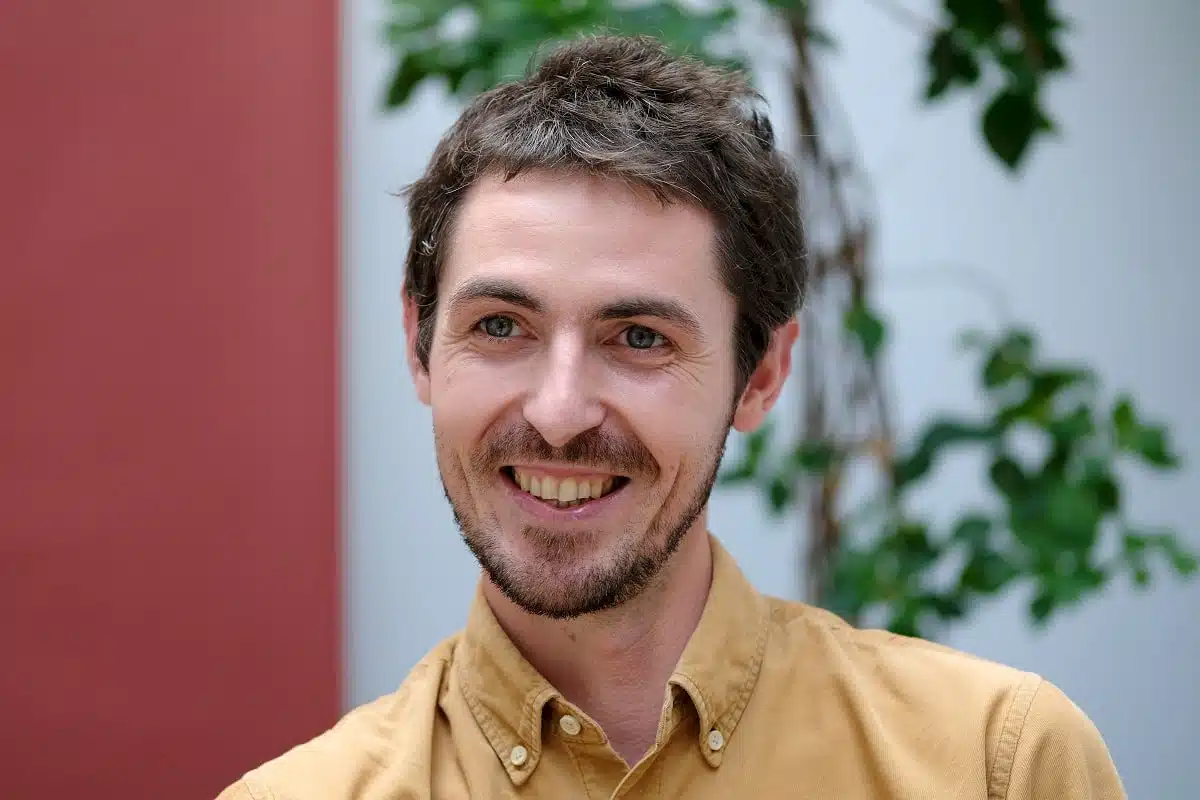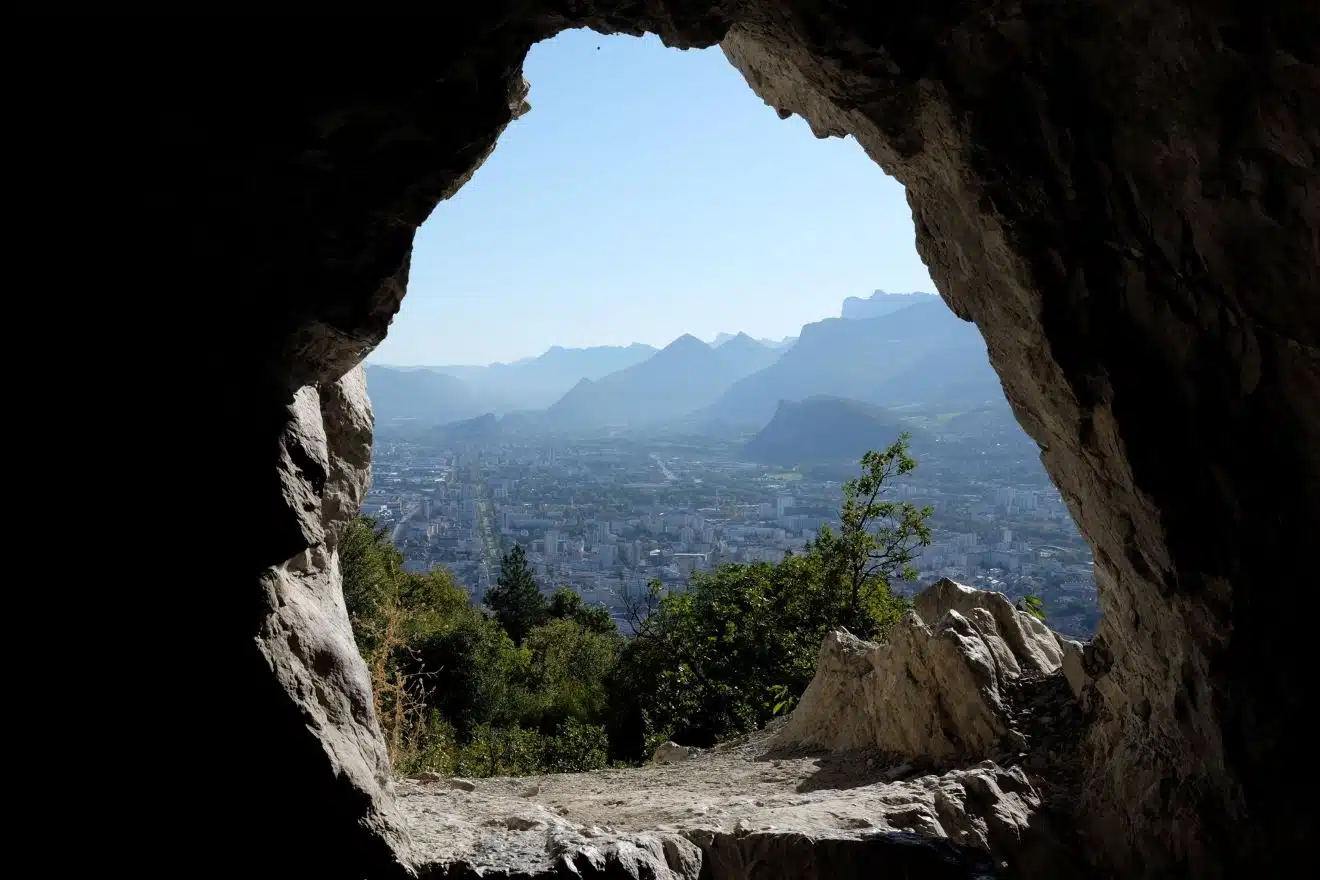The Hermit Crab

Written by Grégoire Langouet
Blog | Dzogchen practice | Dzogchen retreats
In this article “The Hermit Crab”, Grégoire talks about Dzogchen retreat practice. The retreat we all carry with us, within us…
The Hermit Crab
Do you know this little crustacean, the Pagurus bernhardus for Latin lovers [1], which lives protected by an empty shell? It wanders around with its hut on its back, its portable refuge, its inner shelter.
During this summer period of surfing and catching the Atlantic waves or strolling along the beach while gazing at the Mediterranean azure blue sky, or venturing into the caves of the Nepalese mountains (as Paul did in his article ”Making a mountain out of a molehill”) – less likely to encounter the famous Hermit Crab but more likely to encounter Yetis, spirits and other zombies – we need some rest!
“No use. Nowhere to retreat to in solitude. So, it’s decided, I, the hermit crab, will retreat within myself, into my shell, my temporary abode. Nowhere to search, nowhere to go, because it’s already here – I carry it with me, within me, wherever I am!”
A step back or aside, a retreat from our hectic activity, and we set off on a vacation [2] – stop, pause, timeout! We need to rest, to collect ourselves and recharge our batteries… before we set off again with renewed vigor.
And in this relative calm – back in the office in two weeks! – this peculiar crustacean known as the hermit crab inspires us with some analogies to the practice of Dzogchen, the practice of retreat – stepping back from the tumultuous conditions that often surround us. A bit of calm – one hopes as one enters the shell-hut – before the next thrilling rollercoaster ride!
Retreating for one, ten, or a thousand days, as a mountain hermit, subterranean dweller, or desert wanderer, has been seen in many other contemplative traditions. I confess to having a particular fondness for our Christian ancestors of the Egyptian or Syrian deserts; those “men drunk in God”, as Jacques Lacarrière called them [3] ; or even today, in France, for Sister Catherine, a Catholic hermit of the Pyrenees mountains, or Lama Jigmé Thrinlé Gyatso, a French Buddhist monk who spent more than a decade in his alpine hut [4]. So, it’s possible, even here! But the ultimate question for retreaters on holiday remains: sea or mountain? A question that the Tibetans have rarely considered…
Let’s stay on the beach for now. Our crustacean hermit, with his six legs and protective shelter on his back, has decided to go on retreat. Fed up with all the nonsense, colleagues, and children. Even the dog, I’m leaving with my mother-in-law. I’ve had enough, I’m leaving! Give me refuge, give me silence, give me solitude. I retreat into my shell.
But when I got to the beach, I realized that I wasn’t the only one with this brilliant idea. All the buddies Bernards and Bernardas, the hermit crabs, also want their spot of silent rest, their fair share of shade and sun, their well-earned peace. Damn! Just when I wanted to get away from it all, here I am again with the same companions.
An idea! I’ll bury myself in the sand – head and feet included – and explore the underground, finally finding absolute silence, total peace. What a dream! Besides, I think it’s a traditional form of retreat. Well… maybe not under the sand, but definitely in the dark, to rediscover *the light of the night*.
It seems that the Greek philosophers Empedocles and Pythagoras practiced this way in the south of Italy – where there are beaches, of course! – “in the Dark Places of Wisdom“, in caves connected by underground passages to the farthest reaches of the earth.. We also think – professional bias being what it is – of the famous Eleusinian Mysteries and the subterranean abduction of Persephone/Kore from her mother Demeter by the infamous Hades! It was also a practice to withdraw and lie down, in the shade or in the sun, to drift off into dreams, during incubation practices under the guidance of the ancient god of healing, Asclepius. So, we haven’t really invented anything new: a good nap, far niente!
Closer to home — at least for Europeans! —, Antoine de Padoue’s caves near Brive-la-Gaillarde are not dug into the sand, but they certainly must have witnessed our friend Bernard – er, I mean, Antoine – enjoying moments of contemplation. In Dzogchen, there are also retreats in complete darkness [5], something Bernard was thinking of while burying himself – but even here, the Hermit thinks, it’s still quite populated…
No use. Nowhere to retreat to in solitude. So, it’s decided, I, the hermit crab, will retreat within myself, into my shell, my temporary abode. Nowhere to search, nowhere to go, because it’s already here – I carry it with me, within me, wherever I am! I stop, right in the middle of the beach. It’s final, this is where I retreat, in the midst of the beach crowd of my fellow beings!
In the Dzogchen tradition, it’s sometimes a bit like that. We look for the ideal place. Sometimes we find it – La Sauveté at the foot of the Pyrenees, in France, is an example – but sometimes we don’t have that opportunity. So, it’s better, like Bernard, to carry our shell with us so that we can take refuge in any situation.
This reminds me of a well-known parable by Shantideva [6]: it’s better to wear shoes to protect yourself on a rough road, symbolizing the difficulties of existence, than to try to make the whole earth flat and smooth. And like the hermit, we can change our shell… or our shoes: tubular or spiral, smooth or ribbed, sometimes even sponge or bamboo are suitable, not to mention living in the company of sea anemones! Depending on the circumstances, a variety of forms of retreat-shells may be appropriate.
But the essential remains – knowing where and how to find this inner refuge, accessing this retreat that’s always available, and thus knowing how “having (deep) me time” as Mila Khyentse mentioned – real vacations, “vacations in the nature of mind” (see Damien’s forthcoming article)!
This is what Dzogchen proposes: the ability, in all circumstances, to access simply and directly one’s inner nature, one’s own deep essence, one’s original being: emptiness-luminosity-love, it’s all one. This is who we are; this is where we can safely retreat, rest, and recharge ourselves! Wherever we are, regardless of our emotions and difficulties, the glimpses of realizing the empty and luminous nature of reality (which is what we “are”) indeed serve as the best protection, the retreat that we all carry within us — a primordial place, forever accessible.
Moreover, the solitary Bernard does not live up to his name of hermit, for he still lives in community… What a support it can be at times to know that one is well surrounded and accompanied, even in solitary retreat!
[1] But for those who prefer Greek, its name comes from “pagauros“: which has a tail in the shape of a cone.
[3] Jacques Lacarrière, the French title is: Les hommes ivres de Dieu, Paris, Seuil, 2008 (1975).
[4] American readers would more likely think about Jetsunma Tenzin Palmo (Cave in the snow, Vicki MacKenzie’s book) and certainly many others…
[5] Mun mtshams (dark retreat) of 49 days to complete the main Dzogchen practice of thögal), or even in the six yogas of the Kālacakra system.
[6] Śāntideva, an Indian Buddhist master of the 7th-8th centuries. The parable quoted in the text is present in his main work, the Bodhicaryāvatāra.


